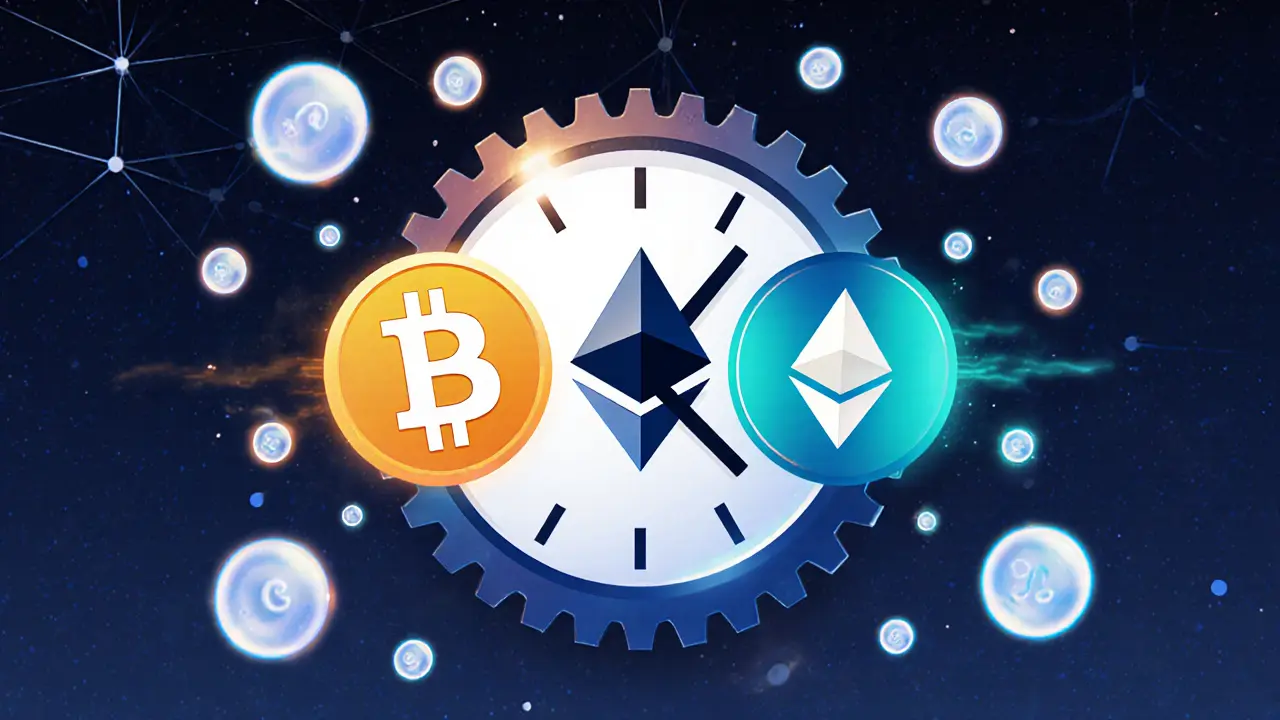Blockchain Block Time: What It Is and Why It Matters for Crypto Trading
When you send crypto, it doesn’t just appear in the receiver’s wallet instantly. It waits for a blockchain block time, the average time it takes for a new block of transactions to be added to the blockchain. Also known as block confirmation time, it’s the heartbeat of any crypto network—determining how fast payments clear, how secure the chain is, and whether you’ll be waiting minutes or seconds for your trade to go through. Bitcoin, for example, has a block time of about 10 minutes. That means if you send BTC, you might wait nearly 10 minutes for the first confirmation—and even longer if the network is busy. Ethereum, on the other hand, averages 12 seconds. That’s why DeFi traders prefer it for fast swaps and arbitrage.
Block time isn’t just about speed. It’s a trade-off. Shorter block times mean faster transactions, but they can also make the chain more vulnerable to forks and double-spends if miners or validators can’t keep up. Longer block times, like Bitcoin’s, are slower but more stable. That’s why you see different chains optimized for different things: Solana uses 400-millisecond blocks for high-frequency trading, while Bitcoin’s 10-minute blocks prioritize security over speed. The blockchain confirmation time, how long it takes for a transaction to be considered final after being included in a block also matters—many exchanges require 3 to 6 confirmations before crediting funds, so even with a fast block time, you might still wait a minute or two.
These differences directly impact what you can do. If you’re chasing an airdrop that requires quick transactions to qualify, a slow blockchain like Bitcoin could cost you. If you’re trading on a DEX like KaiDex or Binance Liquid Swap, a low block time means less slippage and faster exits. Even when you’re just holding, block time affects how quickly you can move assets during a market crash. The transaction speed crypto, how quickly a network processes and finalizes user-initiated transfers isn’t just a technical detail—it’s a practical filter for choosing which coins to trade, which chains to build on, and which airdrops to chase.
Below, you’ll find real-world examples of how block time shapes crypto behavior—from Nigeria’s P2P traders relying on fast chains during banking bans, to UAE investors using low-latency networks to time their tax-free exits. You’ll see how projects like ELIXIR AI or ONUS built their user bases on networks with predictable block times, and why underground markets in Algeria and sanctioned countries lean toward chains that settle fast, even if they’re less known. This isn’t theory. It’s the hidden rhythm behind every trade, every airdrop, and every move in the crypto world.
What Is Block Time in Blockchain? Speed, Security, and Real-World Impact
Block time determines how fast transactions confirm on a blockchain. Bitcoin takes 10 minutes per block for security; Ethereum uses 12 seconds for DeFi; Solana hits under a second but risks outages. Learn how block time affects speed, safety, and real-world use.
read more

